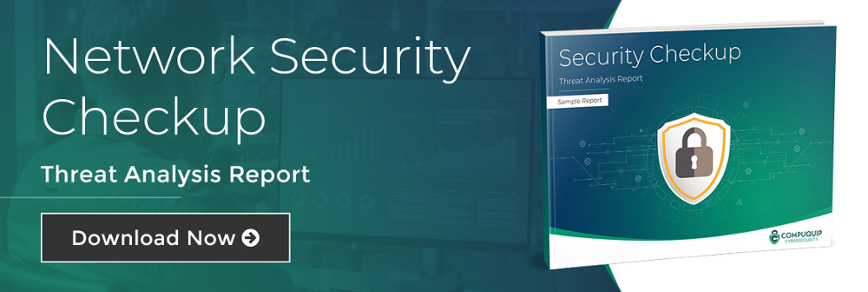Are Your Cybersecurity Tools Up to Date?
In other posts in the Compuquip Cybersecurity blog, the importance of applying security patches to software has been highlighted time and time again. Leaving your business software out of date can mean leaving critical vulnerabilities and exploits on your system that attackers can leverage to cause harm. However, what about the cybersecurity tools you use to defend your network from attack? How often should you check and update your company’s computer security tools?
New attack methods are being released all of the time. Also, as your company grows and adds new network assets, your attack surface will change as well. These are some of the reasons why it's critical to update your cybersecurity tools from time to time. By failing to update or replace your cybersecurity tools periodically, you could be leaving your business open to the latest attack strategies (or leaving security gaps that attackers can easily exploit). With this in mind, here is some information about when and how to update your company’s cybersecurity tools:
How Often Should You Update Your Cybersecurity Tools?
Ideally, you should apply software updates to your cybersecurity tools as soon as possible after they are released. Most computer security tools will release a major update at least once or twice each year—though some cybersecurity solutions developers may release smaller security patches throughout the year to address specific issues that they discover.
While it would be convenient for every security tool provider to update all of their tools at around the same time each year, this is not a realistic expectation. So, if you use a set cybersecurity tools list, it helps to check with the developer of each tool at least once each quarter (if not once each month). Some developers will notify their users via email or in-application alerts when new security patches and updates are available for their software.
When Should I Change My Cybersecurity Tools?
It pays to do more than just apply security patches to your current computer security tools. Sometimes, it’s necessary to make changes to your cybersecurity tools list to adapt to emerging cyber threats or to replace tools that are no longer being supported by their developers.
The frequency of these changes will most likely depend on:
- Your organization’s budget for cybersecurity;
- How frequently you add new network assets;
- How often the developers of your cybersecurity tools stop supporting their products; and
- If any major new cybersecurity threats are discovered.
It may be a good idea to review your cybersecurity tools list at least once a quarter to see whether there are any tools that are being phased out, new threats you don't have a good tool for, or if there are any major gaps in your:
- Cybersecurity monitoring tools (threat intelligence feeds, security information and event management [SIEM], intrusion detection systems, etc.);
- Incident response tools (intrusion prevention systems, data backups, etc.); and
- Basic intrusion countermeasures (firewalls, antivirus/antimalware, VPNs, etc.).
Making updates to your list of cybersecurity tools can help you improve your ability to detect, prevent, and respond to network security incidents—hopefully, avoiding some of the more severe costs of a security breach in the process.
What Are the Risks of Not Updating My Cybersecurity Tools?
When an organization neglects to update the tools they use to protect their business from cyber threats, they run the risk of leaving vulnerabilities and exploits in place that attackers can use. This, in turn, leaves that organization at risk of suffering a cybersecurity breach.
These breaches can result in:
- Data Loss. An attacker may try to upload ransomware to the target’s system. Once on the network, the ransomware begins to encrypt data to render it unusable to the victim. From there, the attacker threatens to delete the encryption key unless the ransom is paid.
- Data Theft. Another major goal of cyber attacks is to steal the target’s data—either so the thief can use it or sell it on the dark web for a profit. These breaches are especially severe because they can result in fines, lawsuits, and a loss of business that can last for years.
- Denial of Service. Some attacks are specifically engineered to bring down a company’s network so they cannot perform routine online services. These denial-of-service (DoS) attacks are often made as a distraction/cover for other cyber attacks, or to make a statement.
The effects of a cybersecurity breach can be as varied as the motivations of the people who conduct them. This is part of the reason why it’s important to choose the right cybersecurity monitoring tools and threat intelligence feeds to stay apprised of the threats that are most likely to affect your business.
While the necessity of regularly checking and updating your cybersecurity tools is easy to establish, it can be near-impossible to identify the right tools for your business. There’s more that goes into selecting a cybersecurity tool than just what that tool is designed to do—there are also considerations for how that tool integrates with your other cybersecurity solutions and business processes.
When attempting to choose a new cybersecurity tool to integrate into your business, it can help to have some advice from a team of seasoned business cybersecurity experts. Compuquip has years of experience in helping businesses in many different verticals resolve their cybersecurity issues. If you have any questions about how to optimize your cybersecurity tools, please contact us.

